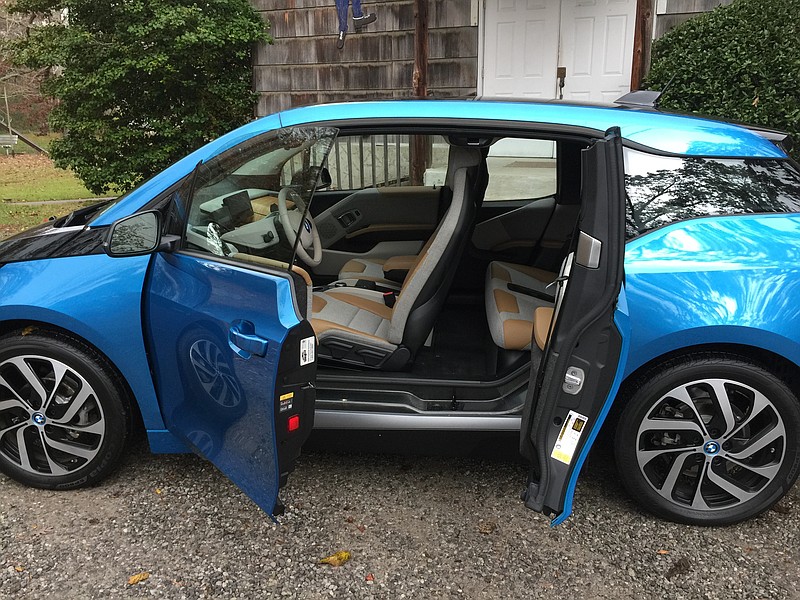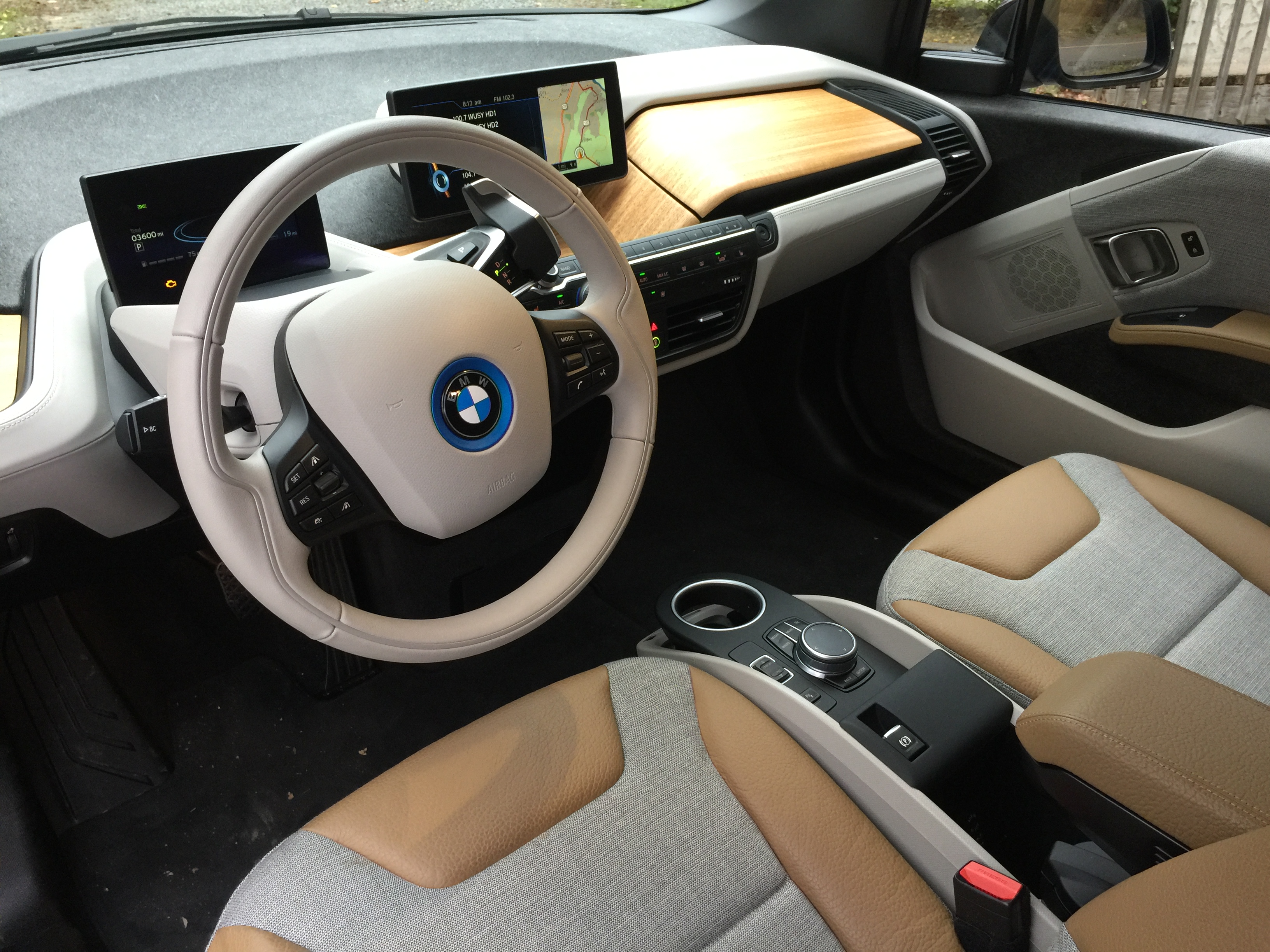Mate a Tesla 3 sedan to a Volkswagen Beetle and you'd get an automobile approximately like the cute and quirky BMW i3.
This little urban runabout has an abundance of charm. Early adopters of electric vehicles, such as the i3, can rest assured they are riding a wave that will only grow in coming decades.
Just this week, the research arm of the global financial services firm Morgan Stanley issued a report predicting sales of vehicles with gas-powered, internal-combustion engines will begin a slow decline in the next decade, and by 2030 electric vehicles will comprise 16 percent of auto sales. By 2040, that percent will climb to 51 percent, and by 2050 a commanding 69 percent of auto sales will be electrics, the Morgan Stanley report predicted.
The current $7,500 federal tax break for buying electric vehicles, however, is somewhat in doubt, as new tax laws being considered now by the U.S. Congress may or may not ultimately include the credit.
If you're skeptical about the growth of electric vehicles, ask yourself if you thought you needed a smart phone 10 years ago, the year the iPhone was introduced. Probably not, right?
Sales of i3s in the U.S. have been modest, with about 7,600 units sold in 2016. We would imagine most of those were snapped up by urban singles - a demographic Chattanooga has in abundance. The i3's 114-mile (electric only) range and small dimensions make it more suited for light commuting than cross-country traveling. A two-cylinder, range extender gas motor pushes combined range to 180 miles.

View other Test Drive stories by Mark Kennedy
Looking for a used or new car?
BMW of Chattanooga listed no new i3s and one used i3 in its digital inventory this week. Cars.com found 13 new i3s in inventory at dealerships within 150 miles of Chattanooga.
Our five-passenger Protonic Blue tester, equipped with the 2-cylinder gas-powered range extending engine that recharges the battery on the fly, was provided by the manufacturer. With the range-extender feature, the i3 can theoretically be used for road-trips, although a small gas tank limits utility some. Our tester has a bottom line MSRP of $54,295, including more than $5,000 in options.
STYLING AND FEATURES
Fast Facts
-Model: BMW i3 with range extender -Exterior color: Protonic Blue -Interior color: Tan leather and cloth -Engine: All-electric, with 2-cylinder range extender -Horsepower: 170 -Battery: 33kWh lithium-ion -Fuel economy: 111 miles per gallon (equivalent) -Local Dealer: BMW of Chattanooga -Price (as tested): $54,295
To understand the i3 design, visualize the underlying architecture. The fact that it has no conventional drive-train and no need for a transmission tunnel gave designers free rein to come up with an aerodynamic exterior shape that also yields tons of interior space.
The Life Module, BMWs name for its uni-body passenger cabin, is made from carbon fiber reinforced plastics (CFRP), which are so strong there is no need for a B-pillar. As a result, suicide doors swing open to give unrestricted access to the back seat.
Meanwhile, the aluminum Drive Module - essentially the driving platform of the car - is made up of the electric motor that drives the front wheels and the lithium ion battery pack that spans the floor of the vehicle. This gives the i3 the low center of gravity and stable handling that have made the Tesla vehicles so entertaining to drive.
The 19-inch wheels on the i3 look massive.
The interior of the i3 feels immense, too, considering the modest overall dimensions of the car. Sitting in the driver's seat feels more like you're driving a full-size van than a small sedan.
The dash seems to go on forever, and the windshield feels as big as Kansas. BMW says 80 percent of the visible surfaces in the i3 are made from recycled or renewable materials. Among the renewables is light eucalyptus wood, used generously across the dash.
The commitment to environmentally-friendly construction is baked into the i3. The plant in Leipzig, Germany, where the i3 is assembled is powered by windmills, and the car is said to take about 50 percent less energy to build than a vehicle constructed in a conventional auto plant.
Overall, the i3's interior looks futuristic. The seating surfaces are a combination of tan leather and gray cloth, and the cream colored steering wheel softens the look. Two LED screens, one for gauges and one for infotainment, look like iPad minis propped up in different parts of the dash.
Major options include the Giga World interior design package ($1,800), a parking assist package ($1,000) and a bundle of safety-tech features ($2,350).
DRIVING IMPRESSIONS
The BMW i3s is a swift little chariot. Equipped with the gasoline range extender, the i3 zips from 0-60 in about 8 seconds, but it seems faster because the torque is instantaneous.
You can almost drive the i3 with a single pedal because the Brake Energy Recuperation system works automatically to slow down the vehicle when you lift your foot off the gas. For mountain dwellers in the Chattanooga area this creates an odd sensation - instead of coasting and tapping the brakes you have to accelerate down mountain roads.
The electric motor makes about 170 horsepower.
BOTTOM LINE
The BMW i3 competes with the Chevy Volt, the Ford Fusion Energi and the Honda Accord plug-in. Its relatively hefty price tag may account for its modest sales. But make no mistake, the i3, a highly-evolved electric car, is a harbinger of things to come.
Contact Mark Kennedy at mkennedy@timesfreepress.com or 423-757-6645. Follow him on Twitter @TFPCOLUMNIST. Subscribe to his Facebook updates at www.facebook.com/ mkennedycolumnist.


